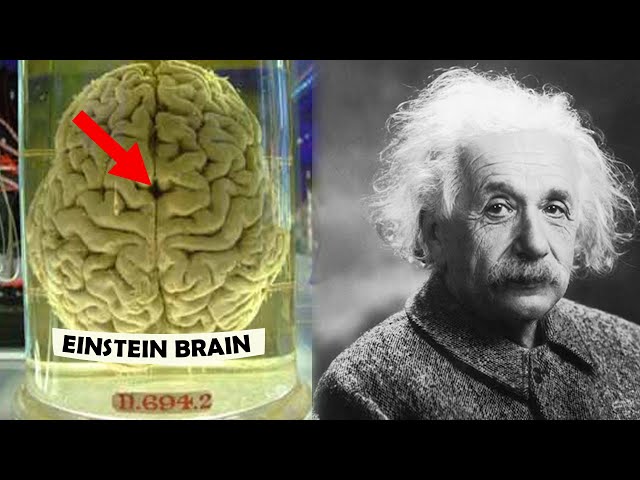In the annals of scientific history, few names evoke as much awe and reverence as Albert Einstein. His contributions to physics revolutionized our understanding of the universe, and his theories continue to shape scientific inquiry to this day. Yet, beyond his groundbreaking equations and profound insights, there lies another enigma: Einstein’s brain.
The story of Einstein’s brain is as fascinating as the man himself. Upon his death in 1955, the renowned physicist’s brain became the subject of intense curiosity and scientific scrutiny. Preserved for study, it offered a tantalizing glimpse into the physical substrate of genius. Over the decades, researchers have meticulously examined Einstein’s brain, seeking clues to unravel the mysteries of his extraordinary intellect.
Unveiling the Anatomy:
At first glance, Einstein’s brain appeared unremarkable. Its size and structure were within the range of normalcy, leading some to question whether there was anything exceptional about it at all. However, closer examination revealed subtle differences that intrigued neuroscientists.
One notable feature was the increased number of glial cells in certain regions of Einstein’s brain, particularly in the left inferior parietal lobe. Glial cells, once thought to merely provide support to neurons, are now recognized for their roles in synaptic function and information processing. The abundance of these cells in Einstein’s brain suggests a potential mechanism for enhanced neural connectivity and information integration.
Additionally, studies have highlighted the unusual morphology of Einstein’s prefrontal cortex, a brain region associated with higher cognitive functions such as decision-making and abstract reasoning. The convolutions and intricacies of this area hinted at a brain optimized for complex thought and conceptualization.
The Neurological Legacy:
While the anatomical peculiarities of Einstein’s brain offer valuable insights, they alone cannot fully explain his genius. The nature-nurture debate looms large in discussions about intelligence, with proponents arguing for a combination of genetic predisposition and environmental influences.
Indeed, Einstein’s upbringing and early experiences likely played a significant role in shaping his intellectual development. Raised in a supportive and intellectually stimulating environment, he was encouraged to question authority and explore the mysteries of the natural world from an early age. His relentless curiosity and insatiable thirst for knowledge propelled him on a lifelong quest for understanding.
Moreover, Einstein’s unique way of thinking transcended conventional boundaries. He possessed an intuitive grasp of fundamental principles that allowed him to envision the universe in ways that eluded his contemporaries. His thought experiments, such as imagining himself riding alongside a beam of light, exemplify his ability to transcend the constraints of traditional reasoning and arrive at profound insights.
Beyond the Brain:
While Einstein’s brain continues to captivate the imagination of scientists and enthusiasts alike, it is essential to recognize that genius is a multifaceted phenomenon that defies simple explanations. The confluence of genetic predispositions, environmental factors, and personal experiences shapes the development of intellectual prowess in ways that are as complex as the workings of the human brain itself.
Furthermore, the mythos surrounding Einstein’s brain risks oversimplifying the nature of intelligence and creativity. While his neuroanatomy may offer tantalizing clues, it is but one piece of the puzzle. True understanding requires a holistic approach that encompasses the interplay of biological, psychological, and social factors.
Ethical Considerations:
The study of Einstein’s brain also raises important ethical considerations regarding the postmortem examination of human remains. While scientific inquiry drives us to seek knowledge and understanding, it is imperative to respect the dignity and autonomy of the deceased.
In recent years, there has been a growing recognition of the need for ethical guidelines governing the handling and study of human tissue, particularly in cases involving individuals of historical significance. Such guidelines aim to balance the pursuit of knowledge with the imperative to uphold principles of respect and integrity.
Conclusion:
The legacy of Einstein’s brain is a testament to the enduring fascination with genius and the quest to unravel the mysteries of the mind. From its humble beginnings as a repository of neurons to its status as an object of scientific inquiry and ethical debate, Einstein’s brain continues to inspire awe and curiosity.
Yet, as we delve deeper into its complexities, we must remember that the true essence of genius lies not in the confines of neural circuitry but in the boundless capacity of the human spirit to imagine, create, and transcend. In celebrating the legacy of Einstein’s brain, let us also celebrate the limitless potential that resides within each of us to explore, discover, and redefine the boundaries of what is possible.

